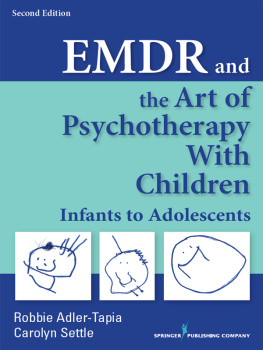Board on Chemical Science and Technology and National - Rational Therapeutics for Infants and Children: Workshop Summary
Here you can read online Board on Chemical Science and Technology and National - Rational Therapeutics for Infants and Children: Workshop Summary full text of the book (entire story) in english for free. Download pdf and epub, get meaning, cover and reviews about this ebook. year: 2000, publisher: NATIONAL ACADEMY PRESS, genre: Children. Description of the work, (preface) as well as reviews are available. Best literature library LitArk.com created for fans of good reading and offers a wide selection of genres:
Romance novel
Science fiction
Adventure
Detective
Science
History
Home and family
Prose
Art
Politics
Computer
Non-fiction
Religion
Business
Children
Humor
Choose a favorite category and find really read worthwhile books. Enjoy immersion in the world of imagination, feel the emotions of the characters or learn something new for yourself, make an fascinating discovery.

- Book:Rational Therapeutics for Infants and Children: Workshop Summary
- Author:
- Publisher:NATIONAL ACADEMY PRESS
- Genre:
- Year:2000
- Rating:4 / 5
- Favourites:Add to favourites
- Your mark:
- 80
- 1
- 2
- 3
- 4
- 5
Rational Therapeutics for Infants and Children: Workshop Summary: summary, description and annotation
We offer to read an annotation, description, summary or preface (depends on what the author of the book "Rational Therapeutics for Infants and Children: Workshop Summary" wrote himself). If you haven't found the necessary information about the book — write in the comments, we will try to find it.
Board on Chemical Science and Technology and National: author's other books
Who wrote Rational Therapeutics for Infants and Children: Workshop Summary? Find out the surname, the name of the author of the book and a list of all author's works by series.
Rational Therapeutics for Infants and Children: Workshop Summary — read online for free the complete book (whole text) full work
Below is the text of the book, divided by pages. System saving the place of the last page read, allows you to conveniently read the book "Rational Therapeutics for Infants and Children: Workshop Summary" online for free, without having to search again every time where you left off. Put a bookmark, and you can go to the page where you finished reading at any time.
Font size:
Interval:
Bookmark:
Rational Therapeutics for Infants and Children
Workshop Summary
Sumner Yaffe, M.D., Editor
with the assistance of Ronald W. Estabrook, Peter Bouxsein, Sarah Pitluck, and Jonathan R. Davis
Based on a Workshop of the
Roundtable on Research and Development of Drugs, Biologics, and Medical Devices
Division of Health Sciences Policy
INSTITUTE OF MEDICINE

NATIONAL ACADEMY PRESS
Washington, D.C.
NATIONAL ACADEMY PRESS
2101 Constitution Avenue, N.W.
Washington, D.C.20418
NOTICE: The project that is the subject of this workshop summary was approved by the Governing Board of the National Research Council, whose members are drawn from the councils of the National Academy of Sciences, the National Academy of Engineering, and the Institute of Medicine. The members of the Roundtable responsible for the workshop summary were selected for their special competences and with regard for appropriate balance.
Support for this project was provided by the American Medical Association; Baxter International, Inc.; Eli Lilly; the U.S. Food and Drug Administration (Center for Biologics Evaluation and Research, Center for Devices and Radiological Health, and Center for Drug Evaluation and Research); the Health Industry Manufacturers Association; Hoffmann-La Roche; Merck & Co., Inc.; National Institutes of Health (Office of Rare Diseases and National Institute of Child Health and Human Development); Pfizer; and Wyeth-Ayerst. The views presented are those of the authors and are not necessarily those of the funding organizations.
This report is based on the proceedings of a workshop that was sponsored by the Roundtable on Research and Development of Drugs, Biologics, and Medical Devices. It is prepared in the form of a workshop summary by and in the name of the editor with the assistance of staff and consultants, as an individually authored document. Sections of the workshop summary not specifically attributed to an individual reflect the views of the editor and not those of the Roundtable on Research and Development of Drugs, Biologics, and Medical Devices. The content of those sections is based on the presentations and the discussions that took place during the workshop.
ISBN 0-309-18364-2 e-pub ISBN
International Standard Book No.0-309-06937-8
Additional copies of this workshop summary are available for sale from the National Academy Press, 2101 Constitution Avenue, N.W., Box 285, Washington, DC 20055. Call (800) 624-6242 or (202) 334-3313 (in the Washington metropolitan area), or visit the NAPs on-line bookstore at
www.nap.edu.
For information about the Institute of Medicine, visit the IOM home page at www.iom.edu.
The full text of this Workshop Summary is available online at www.nap.edu/readingroom.
The serpent has been a symbol of long life, healing, and knowledge among almost all cultures and religions since the beginning of recorded history. The image adopted as a logotype by the Institute of Medicine is based on a relief carving from ancient Greece, now held by the Staatliche Museen in Berlin.
National Academy of Sciences
National Academy of Engineering
Institute of Medicine
National Research Council
The National Academy of Sciences is a private, nonprofit, self-perpetuating society of distinguished scholars engaged in scientific and engineering research, dedicated to the furtherance of science and technology and to their use for the general welfare. Upon the authority of the charter granted to it by the Congress in 1863, the Academy has a mandate that requires it to advise the federal government on scientific and technical matters. Dr. Bruce M. Alberts is president of the National Academy of Sciences.
The National Academy of Engineering was established in 1964, under the charter of the National Academy of Sciences, as a parallel organization of outstanding engineers. It is autonomous in its administration and in the selection of its members, sharing with the National Academy of Sciences the responsibility for advising the federal government. The National Academy of Engineering also sponsors engineering programs aimed at meeting national needs, encourages education and research, and recognizes the superior achievements of engineers. Dr. William A. Wulf is president of the National Academy of Engineering.
The Institute of Medicine was established in 1970 by the National Academy of Sciences to secure the services of eminent members of appropriate professions in the examination of policy matters pertaining to the health of the public. The Institute acts under the responsibility given to the National Academy of Sciences by its congressional charter to be an adviser to the federal government and, upon its own initiative, to identify issues of medical care, research, and education. Dr. Kenneth I. Shine is president of the Institute of Medicine.
The National Research Council was organized by the National Academy of Sciences in 1916 to associate the broad community of science and technology with the Academys purposes of furthering knowledge and advising the federal government. Functioning in accordance with general policies determined by the Academy, the Council has become the principal operating agency of both the National Academy of Sciences and the National Academy of Engineering in providing services to the government, the public, and the scientific and engineering communities. The Council is administered jointly by both Academies and the Institute of Medicine. Dr. Bruce M. Alberts and Dr. William A. Wulf are chairman and vice chairman, respectively, of the National Research Council.
RONALD W. ESTABROOK (Chair), Virginia Lazenby OHara Professor of Biochemistry,
University of Texas Southwestern Medical Center, Dallas
ARTHUR L. BEAUDET, Investigator,
Howard Hughes Medical Institute, and
Professor and Chair,
Department of Molecular and Human Genetics, Baylor College of Medicine, Houston, (through February 1999)
LESLIE Z. BENET, Professor and Chair,
Department of Biopharmaceutical Sciences, School of Pharmacy, University of California at San Francisco
D. BRUCE BURLINGTON, Director,
Center for Devices and Radiological Health, U.S. Food and Drug Administration, Rockville, Maryland (through March 1999)
ROBERT CALIFF, Director,
Duke Clinical Research Institute, Durham, North Carolina
MICHAEL D. CLAYMAN, Vice President,
Global Regulatory Affairs, Lilly Research Laboratories, Indianapolis, Indiana
ADRIAN L. EDWARDS, Private Practice,
Internal Medicine/Cardiology, The New York and Presbyterian Hospitals, New York City
DAVID W. FEIGAL, Director,
Center for Devices and Radiological Health, U.S. Food and Drug Administration, Rockville, Maryland (from June 1999)
STEPHEN GROFT, Director,
Office of Rare Diseases Research, National Institutes of Health, Bethesda, Maryland
ANNE B. JACKSON, American Association of Retired Persons,
Font size:
Interval:
Bookmark:
Similar books «Rational Therapeutics for Infants and Children: Workshop Summary»
Look at similar books to Rational Therapeutics for Infants and Children: Workshop Summary. We have selected literature similar in name and meaning in the hope of providing readers with more options to find new, interesting, not yet read works.
Discussion, reviews of the book Rational Therapeutics for Infants and Children: Workshop Summary and just readers' own opinions. Leave your comments, write what you think about the work, its meaning or the main characters. Specify what exactly you liked and what you didn't like, and why you think so.




